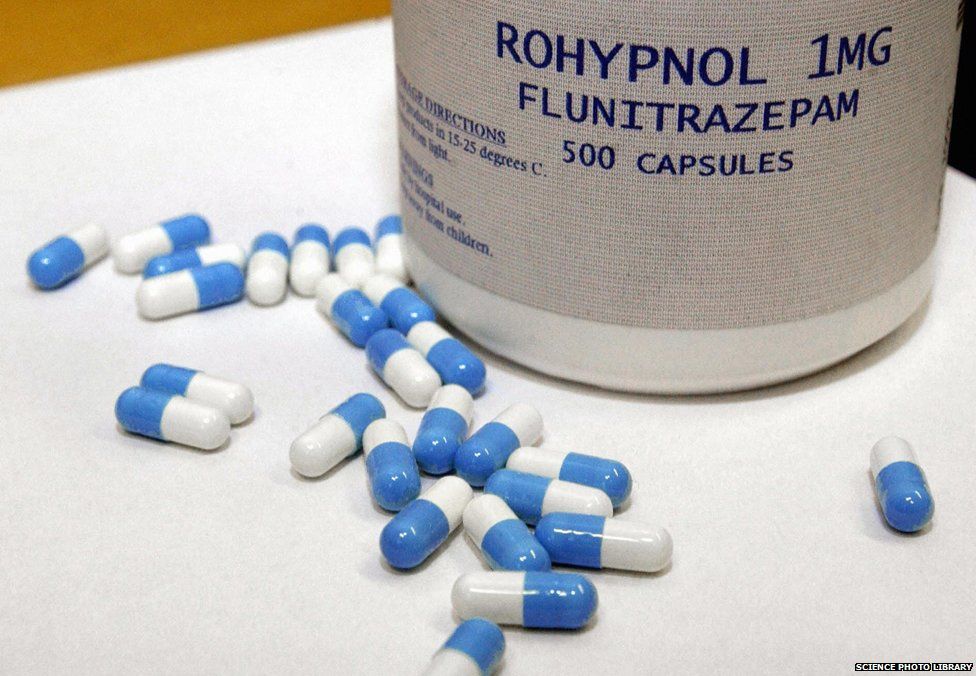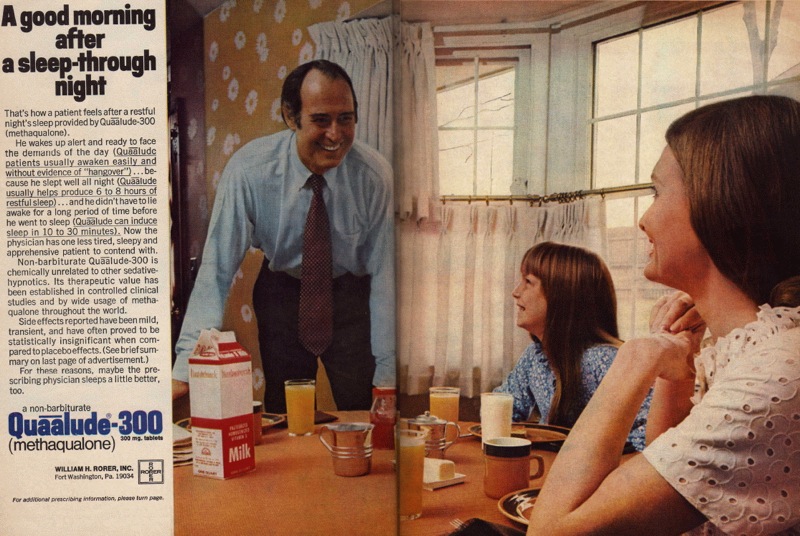Quaaludes: The Rise And Fall Of A 70s Party Drug Explained
Why did a seemingly innocuous sedative, once hailed as a safer alternative, become a symbol of reckless abandon and ultimately, a cautionary tale of addiction? The story of Quaaludes, methaqualone's most infamous incarnation, is a stark reminder that even the most well-intentioned pharmaceutical innovations can be twisted into instruments of harm.
The allure of Quaaludes, or "ludes" as they were colloquially known, was undeniable. Marketed initially as a safe and effective treatment for insomnia and anxiety, these sedatives quickly found a niche in the vibrant, anything-goes culture of the 1960s and 70s. Doctors prescribed them liberally, viewing them as a gentler alternative to barbiturates. The drug offered a sense of relaxation and euphoria, a temporary escape from the pressures of daily life. It was, for a time, the ultimate party drug, fueling the hedonistic energy of the disco era and becoming intertwined with the cultural zeitgeist. The pills came in various forms, often round or oval tablets, and were available with ease, even if you had a preference for the popular "Quaalude." However, the same qualities that made them so appealing also sowed the seeds of their eventual demise.
Quaaludes (Methaqualone) BioData:
- Porsha Williams Family Exploring Her Father Daughter More
- Pineapplebrat Leaks Latest Nudes Videos Onlyfans Instagram
| Category | Details |
|---|---|
| Chemical Name | Methaqualone |
| Common Brand Names | Quaalude (United States), Mandrax (United Kingdom, other countries) |
| Street Names | "Ludes," "Lemmons," "Disco Biscuits," "Sopors," "Mandys" |
| Initial Use | Sedative, treatment for insomnia and anxiety |
| Recreational Use | Popular recreational drug in the 1960s and 1970s, known for its euphoric effects |
| Controlled Substance Status | Schedule I controlled substance in the United States (1984), banned in many countries by the 1980s. |
| Risks | Addiction, overdose (leading to respiratory depression, coma, or death), potential for use as a "date rape drug." |
| Current Status | Legal production ceased worldwide, illegal in most countries. Illicitly produced quaaludes may still be available in some parts of the world. |
| Other uses | In some instances, used to treat conditions like PTSD and alcohol withdrawal (in combination with other drugs). |
| Overdose | Can cause severe respiratory depression, leading to unconsciousness, coma, or death. Risk increases when combined with alcohol or other CNS depressants. |
Reference: National Institute on Drug Abuse (NIDA)
The very qualities that made Quaaludes appealing contributed to its downfall. As the drug gained popularity, so did its abuse. Doctors, initially prescribing them with good intentions, found themselves handing out prescriptions with increasing frequency. The combination of the drug's effects relaxation, euphoria, and disinhibition made it a favorite among recreational users. But this also paved the way for addiction. By the late 1970s, several countries, including the United States, recognized the growing problem and began to classify methaqualone as a controlled substance. The legal restrictions, however, were just the beginning of the drug's decline.
The dangers of Quaaludes were multifaceted. Beyond the risk of physical dependence and the potential for overdose, there was the very real threat of its misuse in sexual assault. Reports surfaced, highlighting how the drug's disinhibiting effects made individuals vulnerable to exploitation, leading to its classification as a "date rape drug." This added another layer of scrutiny and condemnation to the drug, further solidifying its reputation as a dangerous substance. One person admitted that quaaludes were something that could be used on girls to "loosen them up."
- Vegamovies Alternatives Legal Streaming What You Need To Know
- Kenny Santucci Is He Married Partner Wife Dating Life Explored
The path to banning Quaaludes in the United States was a gradual one, marked by increasing concern and regulatory action. The drug, manufactured under the name Quaalude and often bearing the "714" stamp on the tablets, was hugely popular. Regulations around its distribution and prescription were tightened. By 1982, the drug was outlawed, and in 1984, the US Drug Enforcement Agency (DEA) officially labeled methaqualone as a Schedule I controlled substance. President Ronald Reagan signed this into law, effectively banning the manufacturing, sale, and possession of the drug. By 1984, quaaludes had all but disappeared from the u.s. The legal restrictions, coupled with growing public awareness of the drug's risks, effectively brought an end to its era of widespread use.
The story of Quaaludes offers valuable lessons about the complex relationship between medicine, culture, and addiction. It underscores the importance of vigilance in monitoring the use of prescription drugs, and the necessity of educating the public about their risks. The disappearance of Quaaludes from the pharmaceutical landscape serves as a stark reminder of the devastating consequences of unchecked drug abuse. It raises a vital question: Why is there this one example of a popular drug totally disappearing when history is full of ineffective interventions for drug problems?
The answer, like the history of Quaaludes itself, is multi-layered. The rapid rise and fall of methaqualone offers a cautionary tale about the dangers of over-prescribing and the potential for a seemingly harmless substance to become a source of widespread addiction and harm. It underscores the crucial importance of education and awareness regarding the risks and effects of any drug. Only through informed public discourse and responsible medical practices can we hope to prevent similar tragedies in the future.
The legacy of Quaaludes isn't just about a drug; it's about a societal shift. With the growing notoriety and scrutiny surrounding barbiturates, many companies sought a safer way to induce relaxation. The drug was at the center of the seventies disco movement. It represented a time of experimentation and liberation. But the story serves as a powerful reminder that progress demands responsibility, and that even in our pursuit of ease and pleasure, we must never lose sight of the potential for harm.
The drug, outlawed in the United States since 1982, was hugely popular 40 years ago. Highly addictive and giving a euphoric 'high', it became a popular recreational drug before it was banned in the 1980s following widespread misuse. Its euphoric effect, initially viewed as a benefit, ultimately proved to be its downfall. The drug was initially introduced as a safe barbiturate substitute and sleep aid. As with many other CNS depressants, quaaludes were banned once their potential for addiction was realized.
The potential for abuse, which includes, widespread rates of addiction, recreational abuse, and its potential to be used as a date rape drug, contributed to this. Methaqualone overdose can cause severe respiratory depression, leading to unconsciousness, coma, or death. The risk of overdose is heightened when methaqualone is combined with alcohol or other central nervous system depressants. Such combinations were actively sought out by individuals who used the drug recreationally. These drugs were also used in combination with other drugs to treat conditions such as PTSD and alcohol withdrawal. As with other barbiturates, quaalude drugs can produce chemical imbalance and changes in the brain, resulting in dependence and addiction. It was a common brand name of the drug methaqualone, which was used to treat anxiety and insomnia during the 1960s and 70s. The drug had several street names, including "cludes," "lemmons," "disco biscuits," "sopors," and "mandrax" (in some countries).
- Jersey Jons Life Loves Uncovering The American Pickers Stars Story
- Aliyah Marie Free Porn Videos Leaked Content Now

The rise and fall of Quaaludes BBC News

The rise and fall of Quaaludes BBC News

A History of the Quaalude, Jordan Belfort’s Drug of Choice